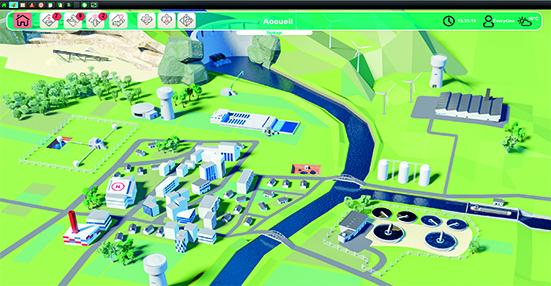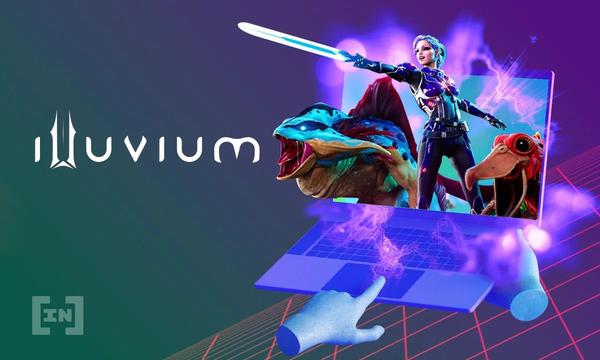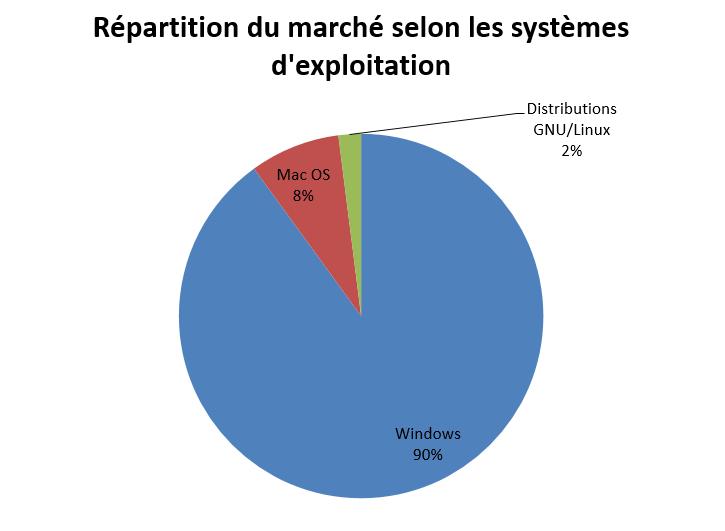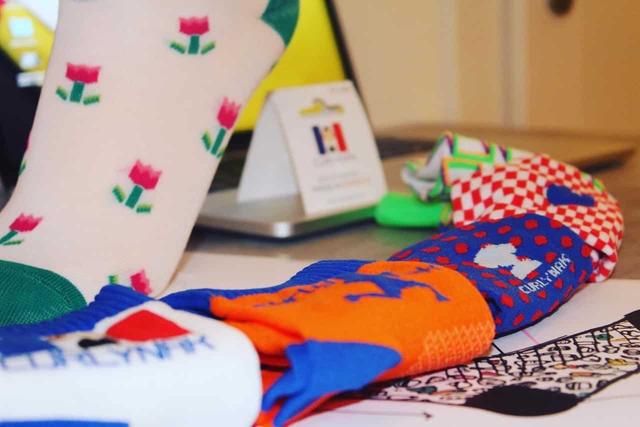Automation, supervision, remote management: optimizing the management of works
The world of water today is familiar with information processing systems. However, changes are emerging in terms of protocols and the opening up of systems. And, after the factories, WWTPs and distribution networks, it is the turn of the sanitation networks to equip themselves.
Drinking water plants, WWTPs and, more recently, distribution networks are now full of communicating sensors, automatons, remote management systems, scadas, etc. component of complete information processing systems. The general idea being to operate the installations in real time, monitor their condition, adapt them at any time to internal (technical, flow variations) and external (weather hazards, population variation, environmental constraints, etc.) constraints, minimize consumption of energy and miscellaneous products, ensure optimal continuity of service, reduce water losses, and move towards predictive maintenance. The principles are well established but the sector is still experiencing changes in terms of system architectures, communication protocols and even the fields concerned. At what level is the evolution today: sensors, actuators and automata? remote management? communications protocols? scanda? “beyond” (web services, data exploitation platforms)?The “lower layer”, already decisive
Sensors, automatons, remote management: although “peripheral”, these systems participate fully in the circulation of information. Sensors, in particular, are increasingly situated between the world of measurement and that of information, whether via remote management or the IoT. Two situations prevail. On networks or isolated substations, in the absence of electrical power, the data produced by the various sensors are fed back by data loggers equipped with a battery ensuring energy autonomy. The energy autonomy and the environmental impact of batteries, the reliability of telecommunications and the interoperability of products are the main concerns of users of data loggers. This is why Perax Technologies has developed its new range of DeltaX DataLoggers. They use rechargeable batteries, the very low consumption LTE-M mode of 4G networks (with 2G mode in case of lack of 4G coverage), the open communication protocol MQTT and an IoT platform for monitoring communication and data and monitoring. interfacing with supervisors and other IoT platforms on the market. “With inter-site, our data loggers send information to remote local stations that can act on the process without human intervention, for example if a threshold is exceeded (pressure too low at a critical point in the network, reservoir level too low , etc. ). Of course, an alarm is sent to inform the intervention teams. But above all, according to a determined frequency (once or several times a day), the data loggers send the data to the central systems” explains, for example, Benoît Quinquenel, Digital & Communication project manager at Lacroix.In installations connected to the electrical network, remote management systems are used, capable of constantly uploading data, via ADSL or mobile telephony, to smartphones, tablets or mobile PCs. This is the case, for example, of the SofreL S4W remote management station in Lacroix, which equips a very large number of municipalities in France and abroad. From this level, it is possible to intervene in the operational management of the facilities. Remote management PLCs, such as the P400Xi from Perax Technologies, allow for more elaborate data pre-processing than that of data loggers, thanks to greater computing power and memory. They make it possible to manage complex local automatisms and servo-controls while offering the possibility of remote monitoring and action on their operation. Because many remote management networks are intended to be interconnected according to the evolution of intermunicipalities, Perax Technologies is currently working on the forthcoming implementation of the standard and open protocol MQTT in its P400Xi remote management automatons like what she made for her dataloggers. Endress+Hauser, a supplier of instruments and automatons, offers an internet “ecosystem”, Netilion. A way to directly connect sensors to web services that can draw information from this mass of data. For example to move towards predictive maintenance. JS automation, the French distributor of HMI/SCADA solutions from Copa-Data, distributes remote management solutions developed by the Italian Seneca and the Dane Brodersen whose integrated software Straton makes it possible to easily automate development processes.
Communication protocols: towards convergence
The time is over when each operator or community developed its information system in isolation, with relatively simple and closed architectures. The “lower layer” is more and more often connected to the Internet, which implies that the entire information system, scada included, can access it.Supervision: central, distributed, on the cloud?
Long a central part of pyramidal information systems, the real-time control and data acquisition system, or scada (Supervisory Control And Data Acquisition) is now integrated into more varied architectures: local “classic” scada for closed systems managing sensitive installations, scada on the cloud, scada like SaaS, even cascaded scadas for “hypervision”. Result of the data from the installations, the supervision "digests" them to present them in an understandable way to a human operator: curves, logs, synoptics... Beyond this one-way function (from the installation to the operator), scadas generally allow the operator to act in feedback on the process. Increasingly open, they also export data to third-party platforms capable of extracting “business” information.Copa Data, publisher of the Zenon scada whose version 10 was released this spring, took into account the “decentralization” of supervision, in any case of data circulation, by creating in 2019 the Zenon Service Grid (integrated in the version 10 of the scada). “It's software that can be installed in the cloud or a private data center. We then create a connection between different sites to “push” and centralize the data. It includes a communication part (MQTT), databases, etc. explains Jérôme Follut, director of Copa Data. The 2022 version of Panorama, published by Codra, will be released at the end of 2021. “There will be a responsive web “client” that can adapt the representation of an installation to the format of the player. We do not represent a WWTP in the same way on a panoramic screen or on a smartphone” emphasizes Jérôme Deyx, from Codra.

Beyond supervision, “hypervision” can group together several scadas to give a general view of a larger system, for example the set of catchments/drinking water plant(s)/distribution network/drinking network. sanitation/WWTP(s) of a community. “A local authority may want hypervision to synthesize field information with rainfall data, obtain an overview, centralize alarm reporting, etc. For this, we use the same software platform – Topkapi – with "intelligence" for data processing, making it possible to calculate key performance indicators, trigger alarms, perform predictive maintenance, etc..." explains thus Arnaud Judes (Areal).
All this without taking into account more decentralized architectures where central remote management stations such as Lacroix's Sofrel PCWin2 or the Topkapi OEM solution, developed by Area in partnership with Perax Technologies, among others, do more or less the same thing as a scada . The limit between remote management and supervision then becomes difficult to define. “Our customers appreciate the "End-user" aspect of our Sofrel PCWin2 supervisor. It is perfectly suited for controlling and monitoring their portable water and wastewater networks. It allows them to be completely autonomous in the configuration and management of the supervisor. PCWin2 integrates the editing of synoptics, performs processing, timestamps the data and transforms them into curves and dashboards to facilitate the interpretation of feedback from the field. In addition, Sofrel PCWin2 has SQL openness to other scadas” explains Benoît Quinquenel (Lacroix). Installed on a PC (relatively powerful all the same), Sofrel PCWin2 can be queried remotely, via html5, by mobile devices. “It provides a very good view of the network thanks to a mapping system. This spring, we are launching a new module dealing with “business analysis”. Colored pointers show the status (normal, in difficulty, alert, etc.) of each local station or data-logger. For each point, up to five information can be displayed (flow rate, pressure, etc.) as an indicator of the current site status. The qualified data from this 1st level of information helps to visualize and understand the network. For better visualization, it is possible to display, in addition to the remotely managed points, overlays of its zones as well as the routes of the pipes or collectors on the zoomable map,” adds Benoît Quinquenel.
“Because of the wide variety of telecommunication protocols, in particular for remote management, it is important to be able to rely on a scada to manage this diversity,” nevertheless believes Pierre Sacareau, project director at Suez Smart Solutions. The debate is not over…Internal/external: an increasingly porous border
Where does supervision stop and where does the exploitation of data by “business” applications begin to extract information to help management? Is this done in-house or using external services? The border becomes blurred, if only because the scada is by construction the exit door of the data towards these business layers. This encourages scada editors to prepare the exploitation of the data… even to carry out certain stages.“We have partners who offer monitoring and energy management tools for installations, for example. “Holding” the raw data, we offer computer connectors facilitating the interfacing between our solution and these third-party tools for the provision of this data. But we are also trying to make supervision more and more intelligent,” says Arnaud Judes (Areal). Topkapi can thus, for example, connect to the Vigicrues data portal. “Clients such as the Valencia community ask us to combine field information (sewerage network) with future rainfall. Thanks to its connector, Topkapi interfaces with a data portal via an API. This makes it possible to combine data from different sources and to build management indicators,” he adds.
Codra pursues the same strategy: the company does not strictly speaking provide “business” solutions but must open its scada. “With H2 Cloud, we offer a SaaS that allows supervisor data to be exported to a data historian located on a Codra cloud. It is hosted in France, secure and partitioned. We can then build dashboards with business knowledge. We offer 50 out of the box, but an integrator or design office can very well build their own dashboard and highlight certain data through the Panorama airlock,” explains Jérôme Deyx. Same openness at Copa Data, publisher of Zenon. “We also worked on data mining, the exploitation of data to derive meaning from it. You have to think about it as soon as the information system is set up and create an architecture that allows it. We can provide APIs so that external web services can “dig into” our data to analyze it,” explains Jérôme Follut.
The Citect Scada solution, offered by IP Systèmes, offers operators a new way to build a contextual scada visualization. The equipment-driven interface delivers holistic, real-time situational context to help the user improve efficiency and facilitate corrective action to mitigate risk and operational downtime.
The "business layer", a domain of specialized actors
This is where, in principle, the exploitation of the data takes place: the calculations, or even the use of artificial intelligence to extract information and decision-making aids from it. have long since developed their own solutions. Noréade (Nord), Eaudazur (Nice), Angers, Strasbourg (SDEA), among others, use this type of system” explains Franco Novelli, technical expert in the Water Cycle at the FNCCR. This is also the domain of specialized publishers, often design offices familiar with water issues, such as Artelia, Cetec Ingénierie, http Project, Purecontrol, Setec Hydratec or companies such as Suez Smart Solutions.Indispensable first step to the exploitation of the data: to validate them. "If a business platform relies on poor quality data, it gives unusable 'results'", recalls Pierre Sacareau. All these platforms therefore have, at the entrance, a data management layer: critical validation, normalization, resynchronization, resampling, etc. All this, as much as possible, without losing the raw data.Suez Smart Solutions offers a range of software platforms, AQUADVANCED®, which covers the entire water cycle. “AQUADVANCED® solutions can be integrated into any context, process data from the most “esoteric” scadas or be installed in factories on existing infrastructures that vary greatly from one site to another. The idea is to put artificial intelligence at the service of the process,” says Pierre Sacareau. For example, in STEP, AQUADVANCED® offers tools to control aeration, injection of reagents or anaerobic digestion. “We retrieve the data from the scada and sometimes we add NH 4 , dissolved O 2 or other parameter sensors. Aquadvance's learning engines gradually adjust the air injection setpoint to adapt to the inlet and outlet effluents, the same for the injection of reagents or the control of anaerobic digestion. AQUADVANCED® also calculates performance indicators (energy, financial, etc.)” enumerates Pierre Sacareau. All this for real-time piloting. For deferred time management, platforms such as AQUADVANCED® can recover, by API or file exchange, data from third-party, paid or open data sources. “For example, we import weather forecasts, or the results of platforms specializing in energy optimization. This feeds the AQUADVANCED® software to target the actions to be taken and calculate indicators,” explains Pierre Sacareau.
The ICMLive system, from Innovyze distributed in France by Geomod, also aims to predict the behavior of wastewater/rainwater networks or watercourses by coupling rain and telemetry observations (position of structures, levels, flow, etc.) to weather forecast models like Arome or Arpege. In addition to anticipating the reaction of networks or rivers before the arrival of an event, the system also makes it possible to test management modifications, to evaluate the scenarios in order to make decisions on the basis of tangible data.
Although more oriented towards the search for leaks and the asset management of networks, Altereo also offers solutions for operational management. “We have developed a system capable of identifying energy deposits in the water network. This “intelligent” system models the hydraulic behavior of the network and identifies the most suitable places to install microturbines. In fact, everything is imaginable,” says Christian Laplaud. For its part, the company Purecontrol has developed a platform which, by combining internal and external factors, is able to maximize energy efficiency, predict and anticipate energy needs. energy of the installations.After factories and drinking water networks, what about sanitation?
While central facilities, such as drinking water plants or WWTPs, are generally already equipped with high-performance information systems, the same does not necessarily apply to networks, where new possibilities are emerging. This is particularly true in sanitation because the instrumentation of these networks started more recently than in drinking water (where the search for leaks was a triggering factor). “Sanitation still has a lot of progress to make in terms of network monitoring, particularly for the discharge of untreated wastewater into the natural environment, especially in rainy weather. Sensors and new technologies help to trace data on this point, and to integrate external data such as the weather,” says Franco Novelli (FNCCR)."Instrumentation of sanitation networks is one of the interesting avenues to follow," agrees Pierre Sacareau (Suez Smart Solutions). He cites, for example, the installation of clogging sensors and connected drains giving a more accurate view of the network and making it possible to anticipate clogging. “These systems make it possible to better direct the intervention: to the right place, at the right time, with the right action. It's a real operational subject, involving AI, etc..." he underlines. It also becomes possible to control the sewerage network in real time by using it as a temporary storage element. “AQUADVANCED® is given a hydraulic model of the network, real-time supervision data or weather data. The platform makes it all “turn” and an optimizer comes up with the instructions to be applied at a given time, a given place, on a pump, a valve…” explains Pierre Sacareau. As an example, he cites the Mages project (SIAAP Effluent Management Support Model) but also the cities of Bordeaux, Marseilles and Singapore, which have adopted this type of solution.
Data: how and why?
All stakeholders insist on this: even before designing and developing an information processing system, issues such as security or data ownership must be taken into account. Cybersecurity remains the main concern of users, especially since the circulation of data – even encrypted – on public communication networks requires extra precautions. "Securing communication should not be an obstacle to the interoperability of systems, which is an essential condition for a total meshing of connected objects and data sharing", recalls Alain Cruzalebes. This is why Perax Technologies has chosen on the one hand to use OpenVPN, a standard solution, open and qualified by ANSSI to secure the data exchanges of remote management PLCs and industrial PLCs existing on site and is currently working on the implementation of the MQTT protocol as well as its TLS secure layer allowing data encryption.“The automation layer, which includes remote management, is a key level for security. The automation/remote management part is a key element in terms of cybersecurity. It must be deployed in accordance with two major normative frameworks: the military programming law for drinking water, considered “of vital importance” by ANSSI, and the European NIS (network infrastructure security) directives for the whole. Communication protocols must be secure in both directions. The DNP3 protocol, in particular, is gaining ground,” explains Pierre Sacareau (Suez Smart Solutions). “Until now, many operators circulated their data over VPNs. We have therefore developed the Zenon Service Grid, a “hub”, which also functions as an identity provider. We no longer go through a VPN but through this service which recovers all the data from an installation. This limits incoming connections,” explains Jérôme Follut, from Copa Data.
While the management of distributed installations such as networks involves sending data “in the wild”, with the necessary precautions, the same is not true for localized installations such as drinking water plants or STEPs. “The scadas are then more closed systems, communicating with many precautions to the outside (the operator's office automation for example). It is a question of limiting any intrusion from the office automation towards the industrial tool” underlines Franco Novelli. This is particularly important for drinking water plants, installations of vital importance. This article is reserved for subscribers, to read the entire article subscribe or buy itBuy this articleSee subscriptionsTelemanagement, supervisionRelated companies Related products Related activities Related content






